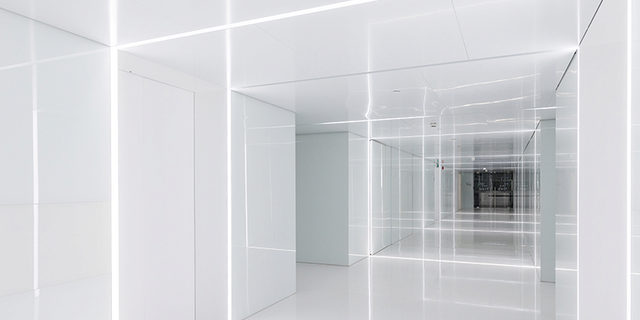Over the past 10 years, I have often been asked to weigh in on whether single-tenancy or multi-tenancy is the better model for cloud services. The virtualization of servers essentially makes everything on the public cloud multi-tenant, but this question focuses on the application platform, rather than the network and infrastructure layers.
Tenancy decisions are often based on three core metrics: performance, cost, and security. Multi-tenancy holds the advantage on performance with massive opportunity for horizontal scale. That ties right to the ability to offer a service at a lower cost, because more clients share the cost of the infrastructure supporting the application. However, I’ve spent my time with companies that serve regulated markets, where security holds a premium. When security and privacy are the premium, single tenant systems hold an advantage.
But this is the past. For companies making the decision today on their enterprise architecture, the argument on tenancy is changing rapidly. The adoption of containers and Kubernetes has led to enterprise-scale microservice platforms. In the last couple of years, we’ve seen our customers making digital transformation decisions not on a binary cloud-versus-on premises basis, but on a hybrid or multi-cloud basis. Tenancy has achieved a similar level of sophistication. Systems and their related services are moving to architectures that enable you to achieve a hybrid model for tenancy, where the best of both worlds is within reach. This allows teams to balance performance, security, and cost.
Let’s start with the definition of tenancy and the differences:
- Single-tenancy is an architecture in which a single instance of a software application and supporting infrastructure serves one customer (i.e., tenant).
- Multi-tenancy is an architecture in which a single instance of a software application serves multiple customers (tenants).
- Hybrid-tenancy is where microservice architectures leverage services that are both single- and multi-tenant to optimize the balance of performance, scale, and security.
How microservices enable hybrid tenancy
Microservices is an architecture where each functions of an application are separated from each other and communicate through APIs and protocols. It differs from traditional software design, because the application functions are not located in a single code base. The advent of containers allows these services to operate independently from the core application code base. When it’s all put together, you can run different services on dedicated resources. Since access to the services is delivered over API, the software engineer can now design which services are delivered using each tenancy model.
The hybrid-tenancy model enables an application platform to deliver functionality that is designed to deliver across the three key value metrics (security/performance/cost) by minimizing tradeoffs.
Security/privacy
In a traditional architecture, it was always considered the most secure to choose a single-tenant architecture. This model delivered the application in isolation from other clients sharing the cloud. Virtual machines in the instance were logically separated, limiting the access points for a malicious actor to exploit a vulnerability.
Even with the evolving landscape of privacy regulations globally, not all of the data used by the services supporting applications require the same level of security. As described above, a microservice architecture can segment services that require sensitive data (like customer data), into a logically separate, single-tenant service. The user interface layer that does not house sensitive data can be delivered as a multi-tenant service, without risking the security of the system.
Performance
Performance is associated with multi-tenancy. This is because the model lends itself to easy horizontal scaling. Additional resource come online when needed without experiencing downtime. The ability of the system to perform is limited only by the system’s ability to recognize and react to scaling events.
Looking back to our multi-tenancy example of the user experience above, by leveraging a multi-tenant model, traffic spikes at one tenant may be offset by ebbs in traffic by another tenant. In the event that there is no offset, the platform scales horizontally and seamlessly for the tenant.
Cost
Probably the least controversial topic is cost. Multi-tenancy is cheaper, since multiple tenants share the resources. This allows for economies of scale for the service provider that can be passed on to the tenant. A pure multi-tenant service will have a cost advantage over a hybrid-tenancy system.
When the discussion turns to value, though, the economics change. Because hybrid-tenancy allows critical aspects of your application to maintain their single-tenant isolation (e.g., sensitive data), you bear a lower risk. Therefore, though likely somewhat more expensive than full multi-tenancy, the hybrid systems will win on value. This is aligned with the success of single-tenant systems in the modern cloud market.
The future of tenancy
Microservices are changing the way we think about tenancy for cloud services. These architectures are driving concepts of distributed services that enable greater customization and flexibility when it comes to tenancy. Services architected to support hybrid-tenancy, where a mix of single- and multi-tenant services are delivered, will be able to optimize the value to the client by tailoring services to the values of cost, security, and performance.
Pega is already on our journey to hybrid-tenancy, as our CEO Alan Trefler announced in his PegaWorld 2019 keynote. Our microservices approach is focused around delivering the desired outcomes to customer journeys, rather than simply focusing on channels and tasks. The result is an approach to tenancy that will balance performance, cost, and security while driving an architecture designed to break down silos in systems.
Learn more:
- Read how Pega’s Predictive Diagnostic Cloud is provides AI-driven insights to help developers identify and optimize application performance.
- Learn how Pega Cloud® Services support scalable, secure enterprise architectures.
- Download our data sheet on Pega’s end-to-end cloud services.
- Try the Pega Platform™ on the Pega Cloud for free!
- Join us at PegaWorld iNspire to test-drive the latest game-changing software and network with tech leaders from some of the world’s biggest global brands.

